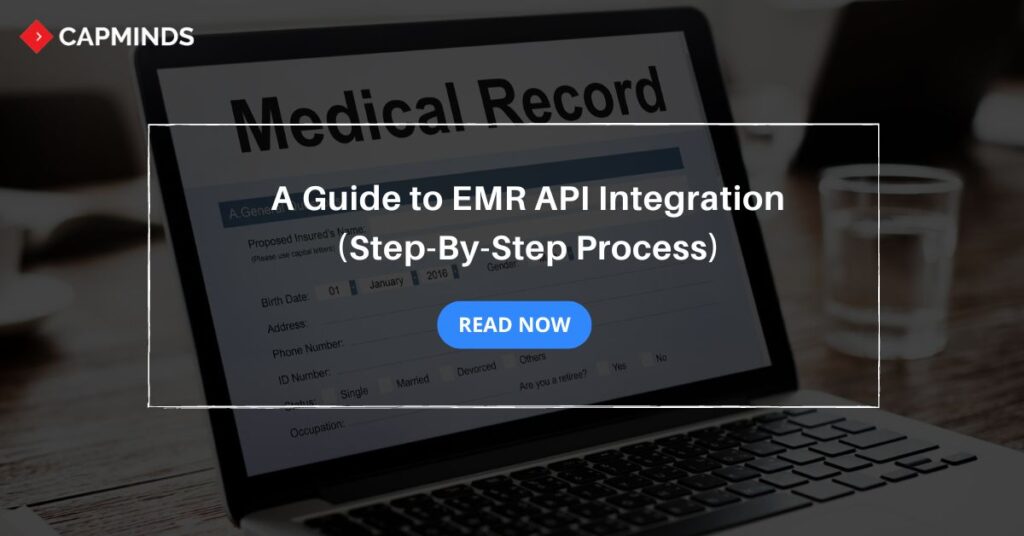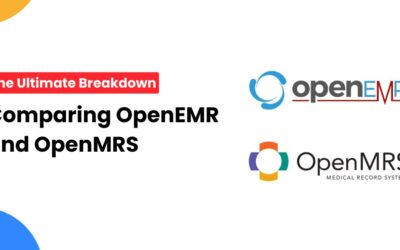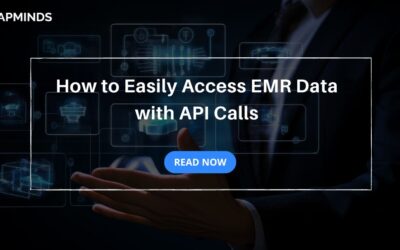A Guide to EMR API Integration (Step-By-Step Process)
Electronic Medical Records (EMR) systems are becoming the backbone of modern healthcare practices. By playing a crucial role in storing sensitive patient information securely and streamlining clinical workflow, it helps healthcare providers in many ways to deliver quality care.
As the demand for health interoperability grows, the necessity of integrating EMR systems with other healthcare applications through APIs has become essential. This guide will walk you through the step-by-step process of EMR API Integration.
The Definition of EMR API Integration
EMR API Integration means Electronic Medical Records Application Programming Interface Integration. It acts as a bridge between different healthcare software systems, allowing them to securely exchange patient data. Here is what EMR API integration does:
- Connects EMR systems with other healthcare applications: This means health data can securely flow between EMR systems.
- Shares patient data securely: The API ensures that only authorized users can access the information, and it follows healthcare privacy regulations.
- Improves workflow and efficiency: By streamlining the data exchange, EMR API integration saves time and reduces manual work for staff.
EMR API Integration is the key to achieving better care coordination and more connected healthcare systems.
Core Functionalities of EMR API Integration
The EMR API integration should have all these core functionalities that healthcare providers may need. Here are the key features of EMR API Integration:
1. Security Standards and Compliance Measures
It is crucial to discuss the security measures of the EHR platforms or API.
An EMR API integration process involves contacting with patient’s personal information, so, it needs to be compliant with HIPPA and SOC2 security. Here are a few security measures that you want to look out for when choosing EMR API:
- HIPPA Compliance: The standard for protecting sensitive patient information.
- SOC-2 Security: The EHR platform has finished reporting on different organizational controls regarding security, availability, processing integrity, confidentiality, and privacy.
- PIPEDA: If working with patients residing in Canada.
- PCI certified if patient financial information will be stored within your platform.
2. Standardzing Data Format
- EMR systems often use different data formats.
- Effective APIs can translate and standardize data, allowing seamless exchange across various platforms.
- This eliminates the errors caused by data incompatibility and simplifies information sharing.
3. EHR Interoperability
- EMR APIs enable communication between electronic health records systems from different vendors.
- This facilitates a more comprehensive view of the patient’s medical history, regardless of the healthcare providers involved.
4. Scalability and Flexibility
- As healthcare data volume grows, EMR API Integration should adapt efficiently.
- Look out for solutions that can handle increasing data loads and integrate with new applications as needed.
5. Real-time Data Access
- Timely access to patient information is crucial for informed decision-making.
- EMR API integration should provide real-time access, allowing healthcare providers to view the latest updates on a patient’s health status.
Related: The Ultimate Guide to EMR/EHR Customization & Integration
EMR API Integration (Step-by-Step Guide)
The Successful EMR API Integration process involves careful planning and execution. Here’s a step-by-step guide to navigating the EMR API integration process:
- Evaluate Vendor History
- Develop Integration Plan
- Verify Compliance
- Conduct Integration and Testing
1. Evaluate Vendor History
- Research the vendor track record: Before diving in, research the chosen vendor’s experience in EMR Integration thoroughly. Look for successful care studies and references showcasing their expertise in connecting disparate healthcare systems.
- Assess technical capabilities: Ensure the vendor has the technical capabilities to handle your specific EMR system and desired integrations. Evaluate their development team’s experience with relevant APIs and healthcare data security protocols.
- Review support infrastructure: A robust support infrastructure is crucial for a smooth integration process. Verify the vendor offers ongoing support to address any issues that may arise after deployment.
2. Develop Integration Plan
- Define the objectives and scope: Clearly define what you aim to achieve with the EMR API Integration. What specific data needs to be exchanged? How will this integration improve your workflows? A well-defined scope ensures the project stays focused and delivers the desired results.
- Identify data exchange needs: Pinpoint the specific data elements that need to be accessed and transferred between your EMR system and other applications. Consider factors like patient demographics, medical history, medications, and lab results.
- Choose the right integration approach: There are various integration methods available, such as HL7 or FHIR. Consult with your vendor to determine the approach that best aligns with your technical infrastructure and desired data exchange capabilities.
3. Verify Compliance
- HIPPA Compliance: Healthcare data is subject to strict regulations, particularly HIPPA (Health Insurance Portability and Accountability Act). Ensure the chosen vendor and integration methods comply with all relevant HIPPA regulations to safeguard patient privacy and data security.
- Internal Security Policies: Align the integration with your organization’s internal security policies. This includes measures for data encryption, access control, and user authentication to minimize security risks.
- Data Privacy Considerations: Develop a clear understanding of how patient data with be handled and protected throughout the integration process. Address concur regarding data ownership, access rights, and potential data breaches.
4. Conduct Integration and Testing
- Develop and Test APIs: The vendor will develop APIs (Application Programming Interfaces) that facilitate communication between your EMR system and other applications. Comprehensive testing in a controlled environment is crucial to identify and resolve any functional issues before deployment.
- Data Mapping and Transformation: Ensure seamless data exchange by mapping data elements between your EMR system and the integrated applications. This may involve data transformation to ensure compatibility between different data formats.
- User Training and Adoption: Provide training to your staff on how to utilize the new integrated system effectively. Clear and comprehensive training promotes user adoption and maximizes the benefits of the integration.
5. Deployment and Monitoring
- Phased Rollout: Consider a phased rollout approach to minimize disruption. Stary by integrating with a limited set of users or data elements, allowing for adjustments before full deployment.
- Monitor Performance: Continuously monitor the integration’s performance after deployment. Track data exchange accuracy, and system response times, and identify any potential issues that may require attention.
- Ongoing Maintenance and Support: Maintains the integration through regular updates and bug fixes. Leverage the vendor’s ongoing support to address any challenges that may arise after deployment.
Related: EHR/EMR Integrations With HL7 & FHIR Interfaces: Breaking Barriers
CapMinds EHR/EMR Customization & Integration Service
CapMinds offers a comprehensive solution that can help streamline workflow for healthcare practices that use EHR/EMR systems.
We are a group of professional experts with years of experience in the field. CapMinds’ customizable solution can help to solve the common challenges associated with your EHR/EMR system.
- CapMinds can customize the Interface and workflows in your EHR/EMR to simplify navigation and resonate with your healthcare practice.
- Our solution includes building customized accounting and financial reports tailored to your healthcare practice needs.
- We also excel in RCM, Medical Billing, and collection for practice-based physician groups. Our service includes medical coding, claim tracking, denial management, online payments, and financial reporting.
- Our specialists provide EHR/EMR credentialing service that helps you to submit claims quickly, boost revenue, and avoid productivity losses.
- We can guide you through the entire onboarding process and provide a customized EHR/EMR solution to streamline your healthcare practice workflow.
- Our EHR/EMR integration solution integrates third-party tools and apps with your EHR/EMR.
Whether you want to experience the full capabilities of EHR/EMR or a customized solution tailored to your specialty healthcare practice needs, CapMinds is the best cost-effective choice.
Contact us and unlock the full potential of your EHR/EMR system with the help of CapMinds’ customization and integration solution.



